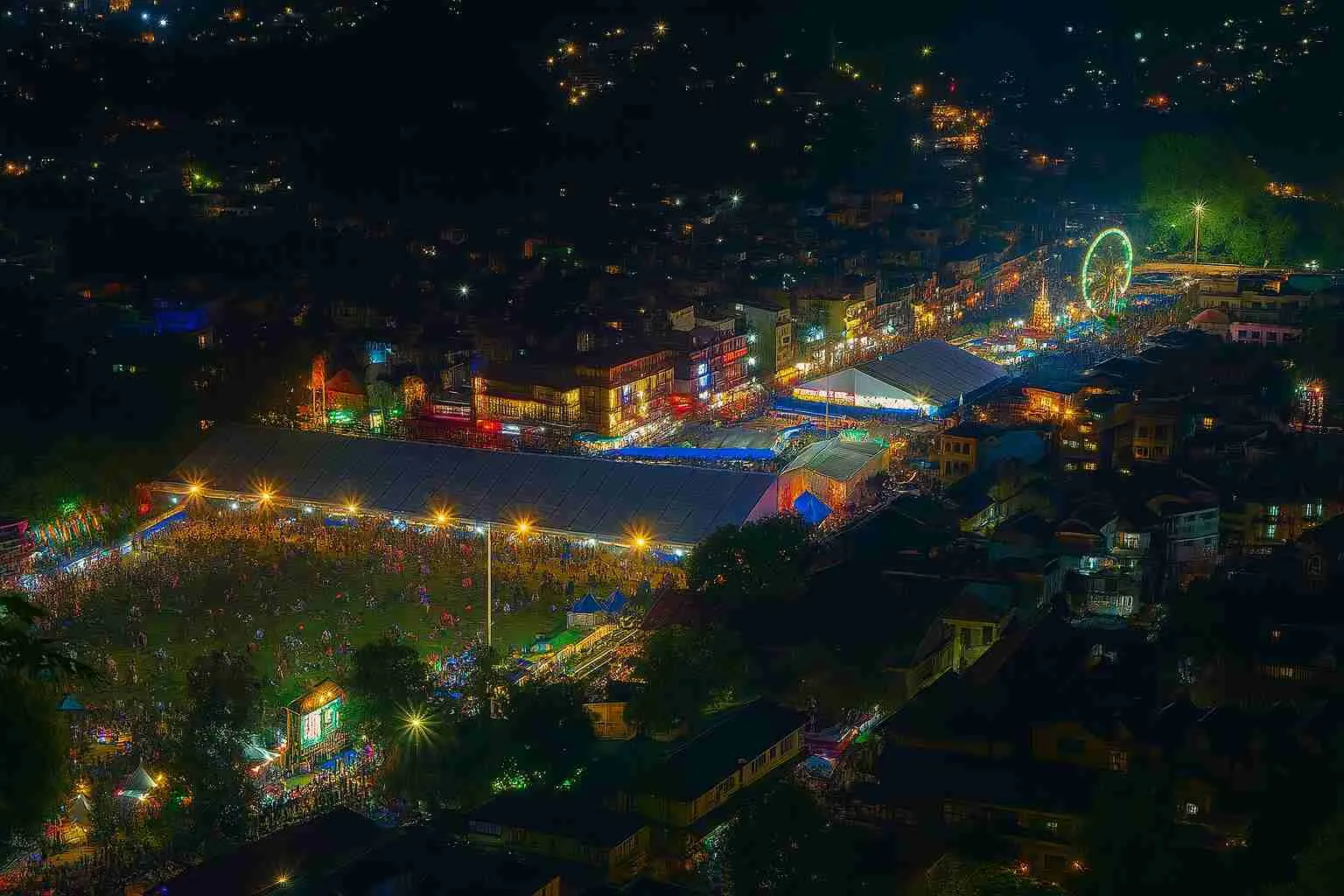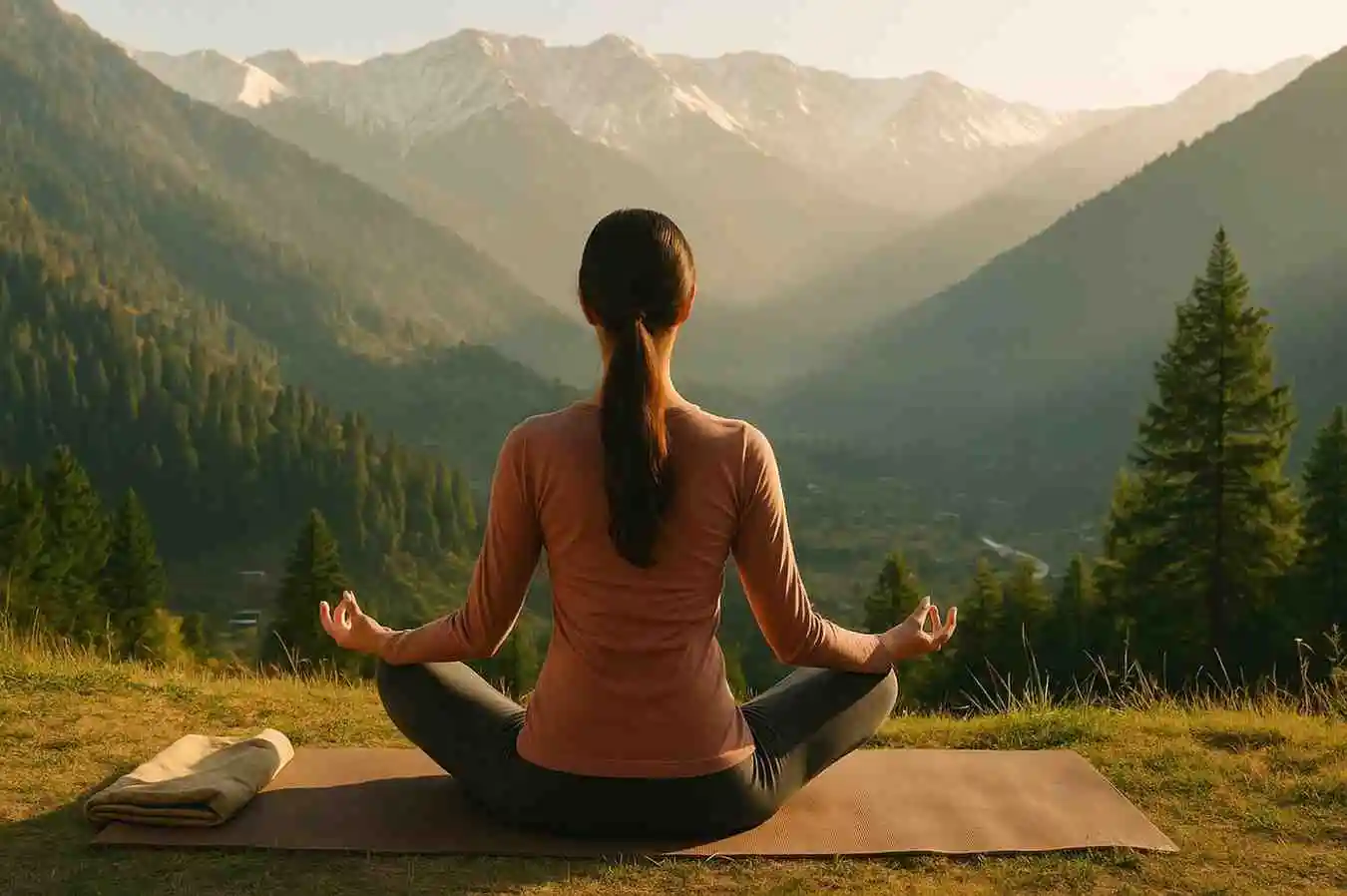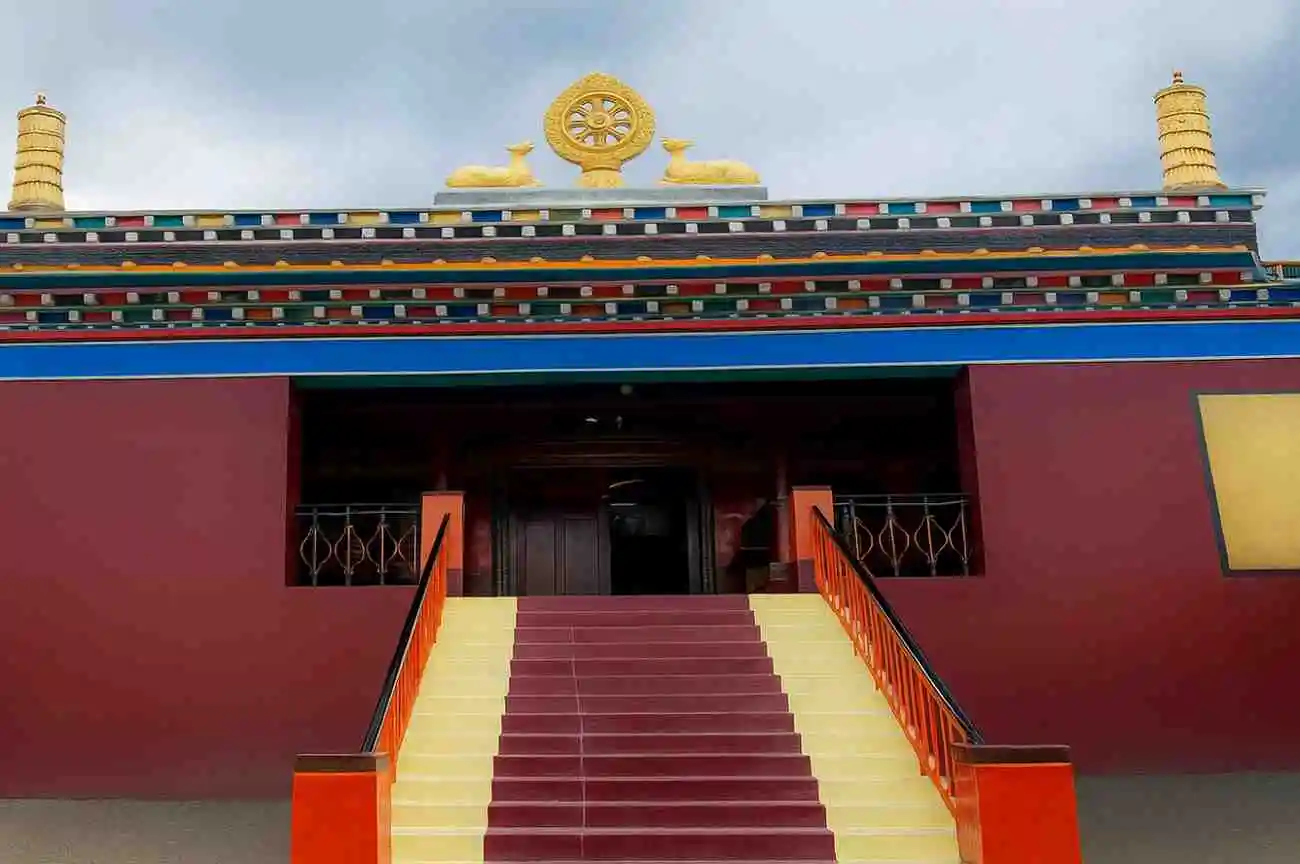Himachal Pradesh, known for its beauty and calm, has a rich history and culture. The state has several monuments and sites telling its history. These historical landmarks showcase the region’s architecture, culture, and history. Here is a list of 15 must-see historical sites in Himachal Pradesh
1. Kangra Fort
Kangra Fort, one of India’s oldest and biggest, symbolises Himachal Pradesh’s ancient kings’ majesty and endurance. This 4th-century BC Kangra fort was built by the Kangra royal dynasty. It saw several conflicts and invasions, notably Mahmud of Ghazni and the Mughals. The fort’s high location at the Banganga and Manjhi rivers provides panoramic views of the lowlands below. Visitors may see ancient temples, elaborately carved gates, and a museum with historical artefacts.
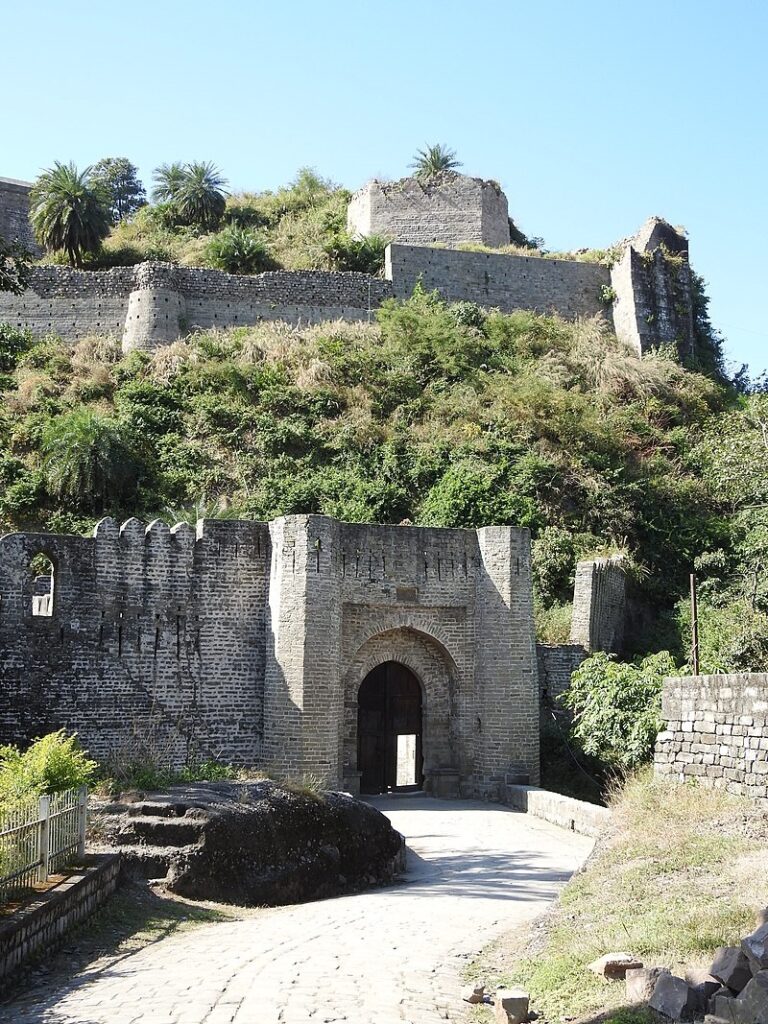
Highlights and Attractions: –
Age: Over 2,500 years old
Temples: Lakshmi Narayan Temple and Adinath Temple
Views: Panoramic vistas of Banganga and Manjhi rivers
Museum: Historical artifacts, sculptures, and coins
Architecture: Intricate carvings and impressive gateways
2. Masroor Rock Cut Temple
The Himalayan Pyramid, Masroor Rock Cut Temple, is a stunning architectural masterpiece in Kangra Valley, Himachal Pradesh. Hindu deities are worshipped in these 15 monolithic rock-cut temples from the 8th century. A single sandstone rock was used to carve the temple, which has beautiful carvings and sculptures by old Indian artists. Beautiful scenery enhances the temple complex’s enchantment. Rama, Lakshmana, and Sita statues make the main shrine a pilgrimage centre.
Attractions and highlights:
Age: 8th Century
Architecture: Solid rock structures
Dieties: The carvings depict Rama, Lakshmana, and Sita.

Carvings: Artistic carvings and sculptures
Surrounding: Natural beauty of Kangra Valley
3. Bhuri Singh Museum
Bhuri Singh Museum, founded in 1908, is named after former Chamba king Raja Bhuri Singh. This museum is full with the region’s culture and history. Artefacts include old documents, coins, tiny paintings, and sculptures. A stunning collection of weaponry, clothing and jewellery shows Chamba’s regal heritage. The Pahari paintings of Ramayana and Mahabharata episodes are highlights of the Chamba School of Art.
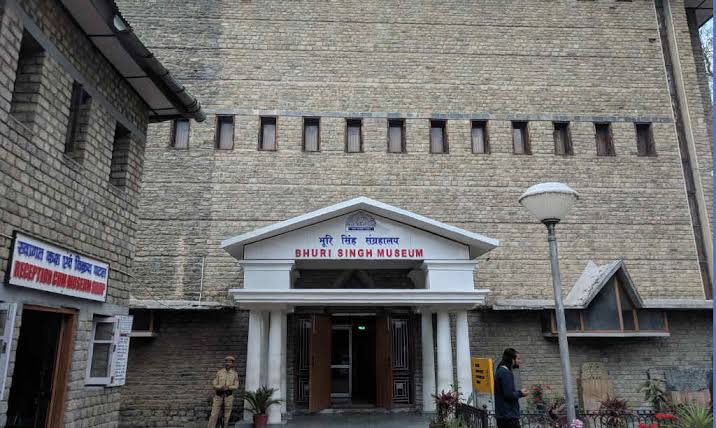
Highlights and Attractions:
Established: 1908
Collections: Ancient manuscripts, coins, miniature paintings, sculptures
Art: Pahari paintings from the Chamba School of Art
Displays: Royal weapons, costumes, and jewelry
Cultural Insight: Rich history and heritage of Chamba
4. Andretta Artists’ Village
Andretta Artists’ Village in Himachal Pradesh’s Kangra Valley is a unique hub for artists and art lovers. The community, founded by Irish dramatist and environmentalist Norah Richards in the 1920s, is now a creative hub. It draws potters, painters, and actors. The Andretta Pottery and Craft Society in the hamlet offers pottery workshops and beautiful clay masterpieces. The village’s Sobha Singh Art Gallery and Norah Richards’ house, now a historical museum, are must-sees.
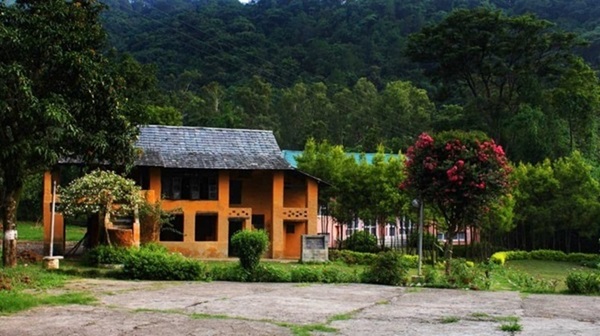
Highlights and Attractions:
Established: 1920s by Norah Richards
Pottery: Andretta Pottery and Craft Society
Art Gallery: Sobha Singh Art Gallery
Heritage: Norah Richards’ house and museum
Creativity Hub: Center for artists and art enthusiasts
5. Baijnath Temple
In the scenic Kangra Valley village of Baijnath, Lord Shiva’s old temple is stunning. The Nagara-style architecture and elaborate stone carvings of this temple, built in 1204 AD by local merchants Ahuka and Manyuka, are famous. The granite temple has a Nagara-style spire with intricate carvings of deities and mythical settings. The sanctum sanctorum has a famous Shivalinga, drawing pilgrims. Tourists and pilgrims visit the temple for its tranquilly and history.
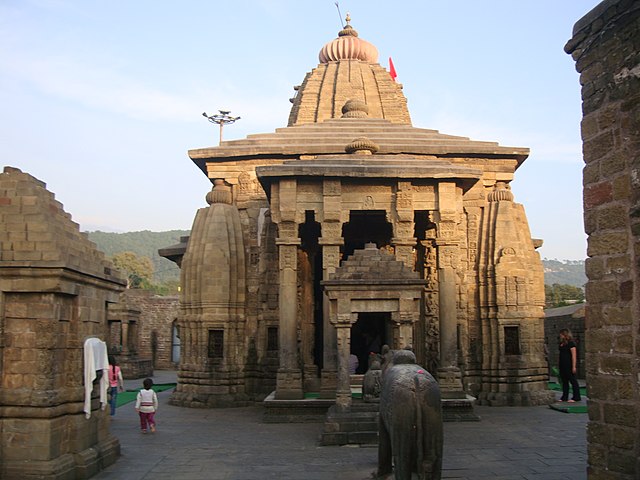
Highlights and Attractions:
Built: 1204 AD by Ahuka and Manyuka
Architecture: Nagara-style with intricate stone carvings
Deity: Lord Shiva (Shivalinga)
Material: Constructed from granite
Significance: Major pilgrimage site and historical landmark
6. Naggar Castle
Naggar Castle is a 16th-century masterpiece on a hill in the Kullu Valley. Raja Sidh Singh built this fortress, which was Kullu’s royal residence for centuries. Naggar Castle combines Himalayan and European designs with elaborate woodwork, stone walls, and amazing embellishments. The castle, now a heritage hotel run by HPTDC, provides beautiful views of the Beas Valley and mountains. Visitors may visit the castle’s many chambers, including a small museum and Jagati Patt shrine.
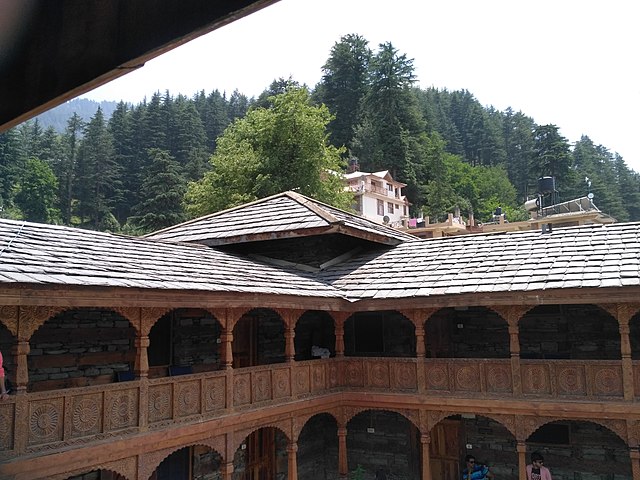
Highlights and Attractions:
Built: Early 16th century by Raja Sidh Singh
Architecture: Blend of Himalayan and European styles
Current Use: Heritage hotel managed by HPTDC
Views: Panoramic views of the Beas Valley and mountains
Attractions: Small museum and the Jagati Patt temple within the castle
7. Tabo Monastery
Tabo Monastery in Himachal Pradesh’s Spiti Valley is One of India’s oldest and most prominent Buddhist monasteries. Established in 996 AD by Buddhist emperor Yeshe-Ö, this monastery has been a hub for Buddhist research and culture for centuries. As the “Ajanta of the Himalayas,” Tabo Monastery boasts beautiful paintings, manuscripts, and stucco sculptures. All nine monastery temples, stupas, and cave shrines have Buddha and Buddhist deity murals and thangkas. Spirituality and history draw pilgrims and tourists to Tabo Monastery from throughout the world.
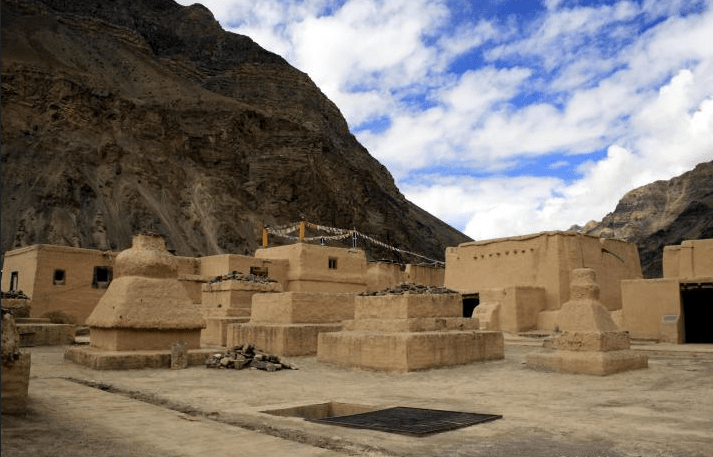
Highlights and Attractions:
Founded: 996 AD by Buddhist king Yeshe-Ö
Significance: One of the oldest continuously operating Buddhist monasteries
Architecture: Exquisite murals, stucco sculptures, and frescoes
Temples: Nine temples within the complex
Attractions: Ancient manuscripts, thangkas, and cave shrines
Nicknamed: “Ajanta of the Himalayas”
8. Chamba Temples
In Himachal Pradesh’s picturesque town of Chamba, ancient temples highlight the region’s rich cultural and architectural legacy. Most notable is the Lakshmi Narayan Temple. In the 10th century, Raja Sahil Varman built this Vishnu temple complex with shikhara (spire) architecture. The Chamunda Devi Temple, Vajreshwari Temple, and Sui Mata Temple honour the local princess respected for her devotion, together with the Lakshmi Narayan Temple. Carvings, sculptures, and stonework decorate each temple, showcasing the period’s creative prowess.
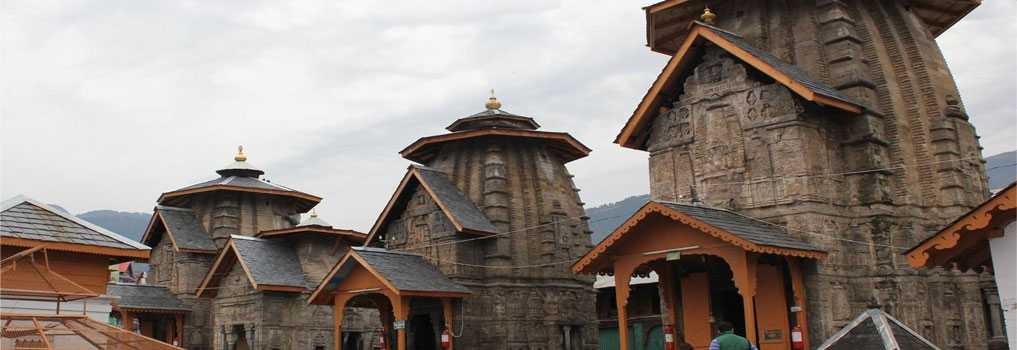
Highlights and Attractions:
Lakshmi Narayan Temple: Built in the 10th century by Raja Sahil Varman, dedicated to Lord Vishnu
Chamunda Devi Temple: Dedicated to the goddess Chamunda
Vajreshwari Temple: Dedicated to goddess Vajreshwari
Sui Mata Temple: Honors Sui Mata, a local princess
Architecture: Distinctive shikhara style, intricate carvings, and sculptures
Cultural Significance: Rich heritage reflecting the artistic and cultural history of Chamba
9. Rang Mahal
Rang Mahal in Chamba is a magnificent palace that shows the grandeur and architectural genius of previous Chamba monarchs. Raja Umed Singh built Rang Mahal in the mid-18th century, combining Mughal and British elements into a spectacular building. Colourful paintings of local folklore, religious literature, and royal life enhance the palace’s appeal. Rang Mahal now contains a museum with traditional clothes, weaponry, and paintings, exhibiting the region’s rich culture. Its architecture and history make the palace a must-see in Chamba.
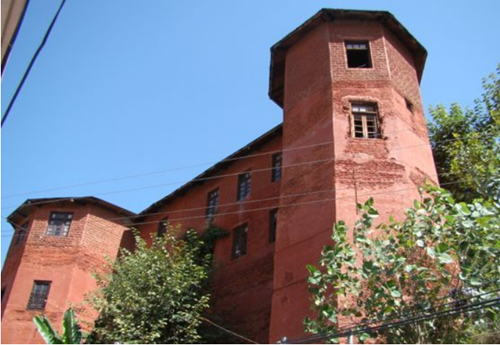
Highlights and Attractions:
Built: Mid-18th century by Raja Umed Singh
Architecture: Blend of Mughal and British styles
Murals: Vibrant paintings depicting local folklore and royal life
Museum: Collection of traditional costumes, weapons, and paintings
Cultural Insight: Reflects the opulence and heritage of Chamba’s royal history
10. Taragarh Palace
Taragarh Palace, in Himachal Pradesh’s Kangra Valley, is a great heritage site. The Taragarh Heritage Hotel company runs the palace, which the Nawab of Bahawalpur erected in 1931 as a summer home. Grand halls, beautiful woodwork, and expansive gardens with vistas of the Dhauladhar mountain range characterise Taragarh Palace’s European-Indian architecture. With contemporary conveniences, guests may enjoy a regal experience in the rich history and quiet beauty of the site. The palace’s ancient charm and sumptuous location attract lovers of luxury and history.

Highlights and Attractions:
Built: 1931 by the Nawab of Bahawalpur
Architecture: Blend of European and Indian styles
Current Use: Heritage hotel offering luxurious accommodations
Views: Stunning vistas of the Dhauladhar mountain range
Features: Grand halls, intricate woodwork, and sprawling gardens
Experience: Combines historical charm with modern amenities for a royal experience
11. Key Monastery
Key Monastery, also known as Ki Monastery, is a famous Tibetan Buddhist monastery in Himachal Pradesh’s Beautiful Spiti Valley. Born in the 11th century, this monastery on a hill at 4,166 metres offers stunning views of the Spiti River and mountainous environment. Approximately 300 monks study and practise Buddhism at Key Monastery. Fort-monastery architecture with whitewashed walls, tiny hallways, and ornate prayer rooms is stunning. Visitors may find a wealth of old Buddhist texts, thangkas, murals, and sculptures detailing Tibetan Buddhism’s spiritual past inside.
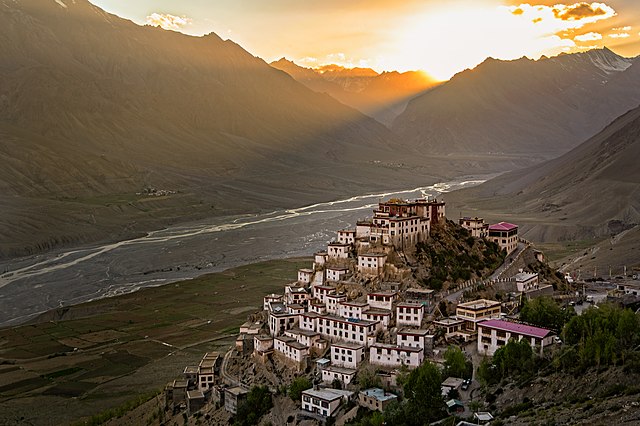
Highlights and Attractions:
Founded: 11th century
Location: Perched atop a hill in the Spiti Valley at 4,166 meters
Significance: Major center for Buddhist learning and culture
Architecture: Fort-monastery style with whitewashed walls and narrow corridors
Collections: Ancient Buddhist scriptures, thangkas, murals, and statues
Views: Panoramic vistas of the Spiti River and surrounding mountains
12. Sujanpur Tira Fort
The 18th-century Sujanpur Tira Fort in Hamirpur, Himachal Pradesh, is a masterpiece. From a peak, Raja Abhay Chand’s fort offers breathtaking views of the Beas River and surrounding scenery. Its majestic buildings, complex courtyards, and old temples make Sujanpur Tira Fort famous. Lord Shiva’s Narbadeshwar Temple, known for its wall murals and sculptures, is part of the fort complex. The fort, formerly a royal home, today draws history buffs and tourists to the region’s rich culture.
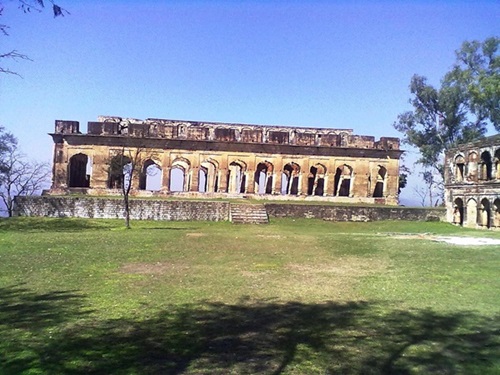
Highlights and Attractions:
Built: 18th century by Raja Abhay Chand
Location: Hilltop overlooking the Beas River in Hamirpur district
Architecture: Grand palaces, intricately designed courtyards
Temples: Narbadeshwar Temple with beautiful wall paintings and sculptures
Views: Stunning vistas of the Beas River and surrounding landscape
Significance: Historical and cultural heritage site
13. St. John Wilderness Church
St. John in the Wilderness Church in Himachal Pradesh’s deodar woods near McLeod Ganj is a peaceful and historic site. One of the region’s oldest churches, this neo-Gothic John the Baptist church was built in 1852. Beautiful stained-glass windows presented by Lady Elgin, wife of Viceroy of India Lord Elgin, who is buried in the graveyard, make the church famous. Visitors and locals seek tranquilly and introspection at the church’s lovely setting.
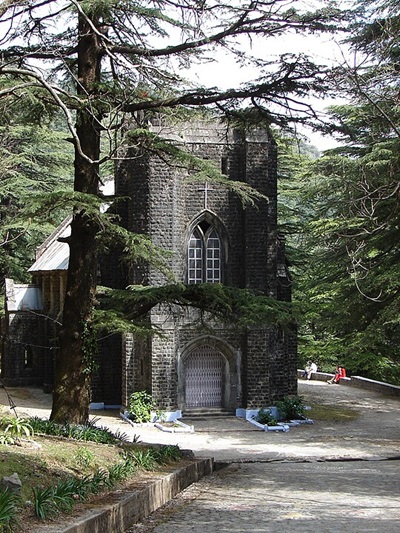
Highlights and Attractions:
Built: 1852
Architecture: Neo-Gothic style
Stained-Glass Windows: Donated by Lady Elgin
Burial Site: Final resting place of Lord Elgin, the Viceroy of India
Location: Amidst dense deodar forests near McLeod Ganj
Ambiance: Serene and peaceful setting for reflection and tranquility
14. Kamru Fort
The stunning Sangla Valley of Himachal Pradesh is home to Kamru Fort, a 1,000-year-old architectural masterpiece. Bushahr’s capital was this historic fort. The fort’s elevated location offers stunning views of the valley and mountains. Kamru Fort has multiple temples and beautiful decorations on its wooden framework. The Kamakhya Devi Temple, dedicated to the goddess Kamakhya, gives the fort a mystical aspect. History buffs and travellers must explore the fort’s rich history, architectural splendour, and tranquilly.
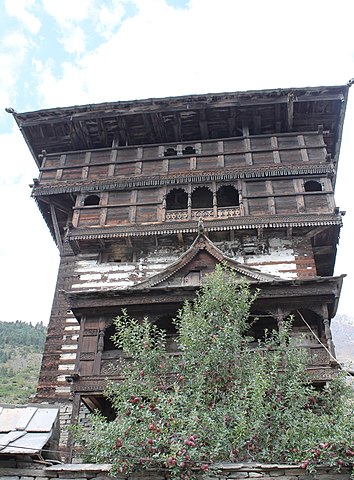
Highlights and Attractions:
Age: Over 1,000 years old
Historical Significance: Former capital of the Bushahr principality
Architecture: Wooden structure with intricate carvings
Temples: Kamakhya Devi Temple within the fort premises
Location: Hilltop in Sangla Valley with stunning views
Attractions: Rich history, spiritual ambiance, and architectural beauty
15. Viceregal Lodge
Viceregal Lodge (Rashtrapati Niwas) in Shimla, Himachal Pradesh, is a historical site. This stately 1888 building was the British Viceroy of India’s summer house. A masterpiece of Scottish Baronial and English Renaissance architecture, the lodge was designed by British architect Henry Irwin. The spacious home has groomed gardens and mountain vistas. Lodge interiors include a grand staircase, teak-paneled walls, and luxurious furniture. Researchers from around India visit the Viceregal Lodge’s Indian Institute of Advanced Study. The lodge’s rich history, gorgeous architecture, and scenic setting draw visitors and history buffs.

Highlights and Attractions:
Built: 1888 by British architect Henry Irwin
Architecture: Blend of Scottish Baronial and English Renaissance styles
Current Use: Houses the Indian Institute of Advanced Study
Interiors: Grand staircase, teak-paneled walls, elegant furnishings
Gardens: Meticulously manicured gardens with panoramic mountain views
Historical Significance: Former summer residence of the British Viceroy of India
Himachal Pradesh has a rich history and culture as well as natural beauty. Historic monuments and sites in the state showcase the region’s architectural beauty and cultural variety. Himachal Pradesh’s 15 significant historical sites include old forts, temples, palaces, and monasteries.
These Himachal Pradesh monuments enlighten and immerse history buffs, cultural explorers, and travellers. These historical locations will take you through Himachal Pradesh’s rich past and lasting legacy.


